Seminar on the “Post-Painted Pottery Culture and Bie-modernism” was successfully held at Lanzhou City University
Profile:
On September 11, the “Post-Painted Pottery Culture and Bie-modernism” seminar hosted by the School of Art and Design of Lanzhou City University was successfully held on the Peili Campus. About 50 people including experts, scholars, artists, entrepreneurs, teachers from the post-painted pottery R&D team, and students from the Department of Arts and Crafts participated in this seminar. The seminar was hosted by Professor Li Yunfeng, Vice Dean of the School of Art and Design.
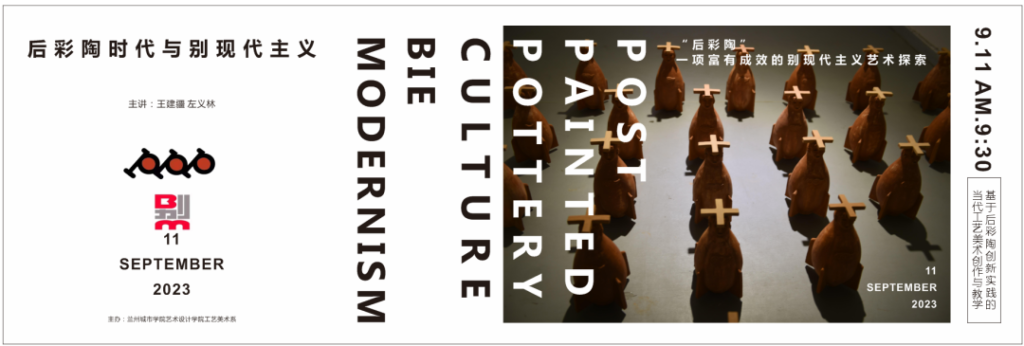
Detail:
Experts and scholars attending the meeting include:
Professor Wang Jianjiang, second-level professor and doctoral supervisor in the School of Humanities of Shanghai Normal University, director of the Chinese Aesthetics Society, director of the Human-Computer Interaction International Conference, and the founder of Bie-modernism theory.
Professor Zuo Yilin, Secretary of the Party Committee and artist of the School of Art and Design of Lanzhou City University.
Ding Ruwei, director of China Film Association, vice chairman of Gansu Film Association, former director of Lanzhou Radio and Television Communication Center.
Wang Anmin, the executive editor-in-chief of Western Literature and Art Studies and Deputy Director of Gansu Literary Creation and Communication Center.
Liu Xiaohu, Director of the Original Native Culture Research Institute.
Gao Bo, associate professor, School of Fine Arts, Northwest Normal University.
Wang Xiye, founder of China Barn Contemporary Image Brand.
Li Dongze, PhD in Urban and Rural Planning, Art and Rural Construction, School of Tourism, Northwest Normal University.
Jiang Yinghong, PhD in Literature and Art, Shanghai Normal University.
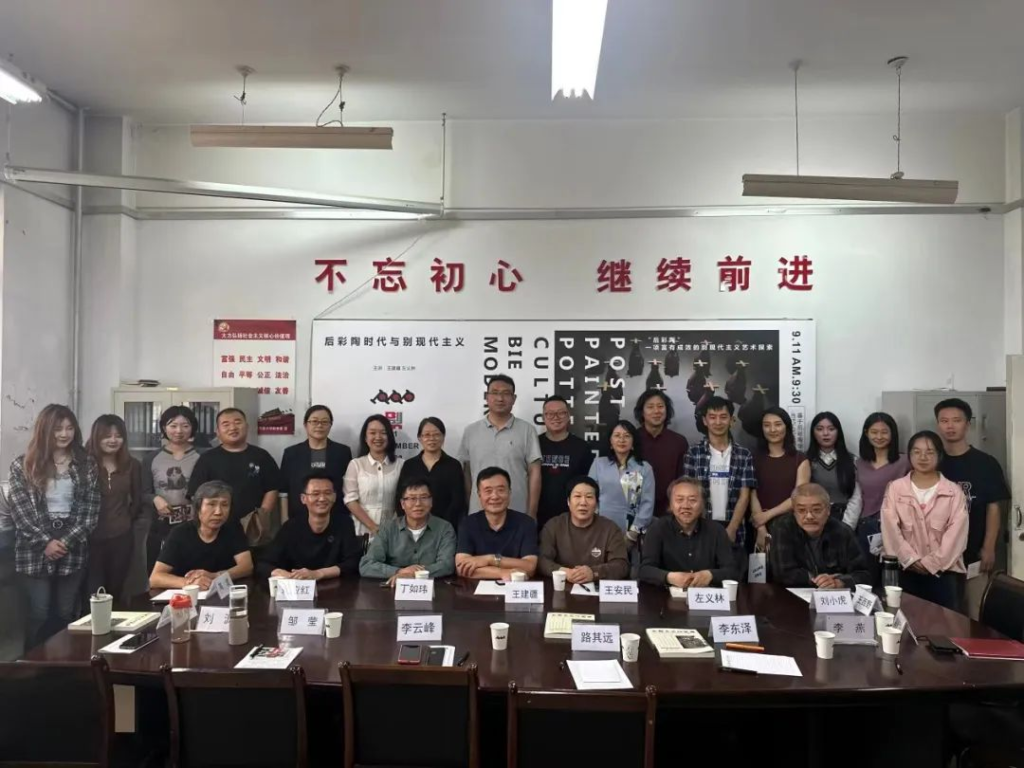
First of all, Professor Zuo Yilin gave a basic introduction to the naming of “post-painted pottery” and the current disciplinary development of the School of Art and Design of Lanzhou City University, the practice of arts and crafts creation, and the assumptions for the construction of an art teaching cognitive system.
From the establishment of the “Research Center for Contemporary Dunhuang Art and Cultural Creation” to the fruitful exploration of modernist art, Zuo Yilin expressed his gratitude to Professor Wang Jianjiang for his long-term support to the college in terms of theoretical guidance, team building, and global introduction of talents.
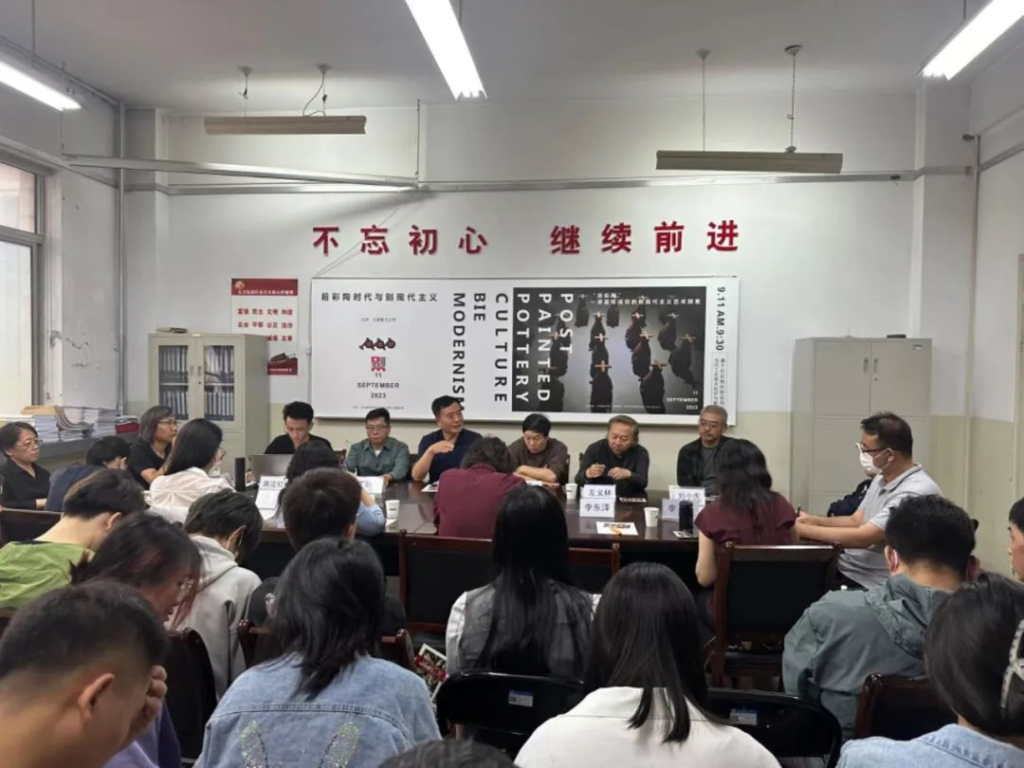
In the keynote speech, Professor Wang Jianjiang took Zuo Yilin’s soon-to-be-published book Post-Colored Pottery as an example and focused on the relationship between Bie-modernism theory and the artistic creation concept of Post-Colored Pottery. Professor Wang Jianjiang believes that “post-painted pottery art” seems to have no connection with Bie-modernism art, but in essence it is of the same origin, similar to the regeneration of Dunhuang Art Regeneration, a sub-category of Bie-modernism theory. The creative concept and aesthetic pursuit of post-painted pottery art is not to copy the art of the painted pottery era, nor to deconstruct the art of painted pottery according to the path of Western post-modern art. Rather, it aims to form an intersection and integration between pure art and applied art, between intangible cultural heritage and contemporary art creation, to create a unique way and create a new perspective.
Finally, participating experts, scholars and well-known artists had a lively discussion on Bie-modernism theory and “post-painted pottery art”. Everyone believes that the proposal of Bie-modernism theory and the creative concept of post-painted pottery art have inspiring value for the formation of current artistic trends, the establishment of art schools, the construction of art disciplines, art education, and art practice.
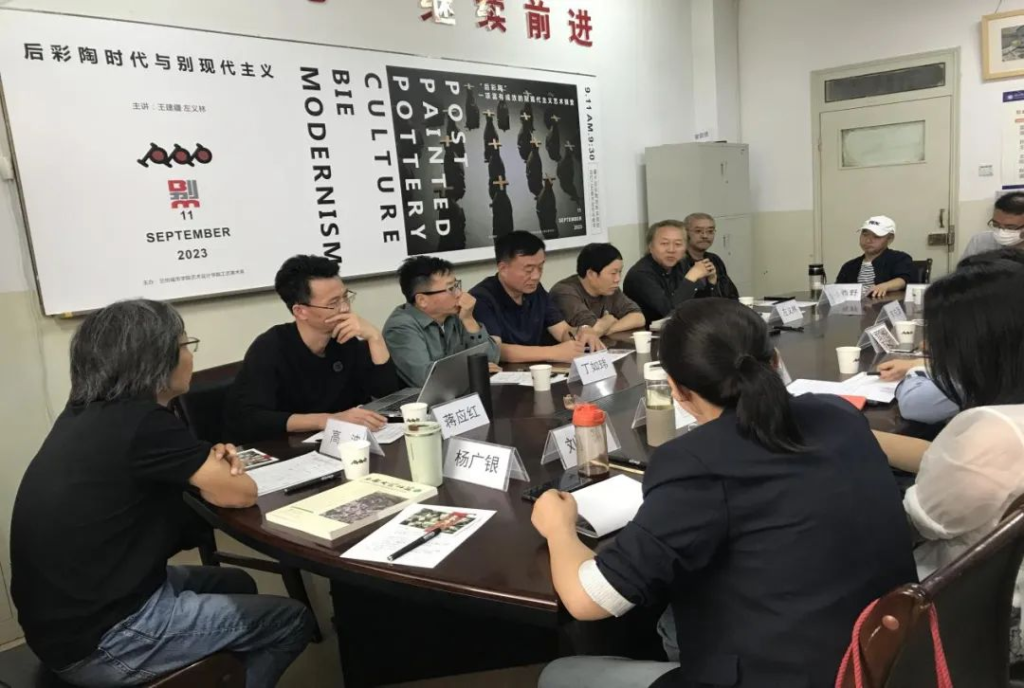
“Post-painted pottery” is a fruitful artistic exploration of Bie-modernism, in the two-way isomorphism of aesthetic theory and artistic practice, between the names of “Bie” and “post”. “Post-painted pottery” artistic creation should seek more spiritual and artistic connection points. “Post-painted pottery” should be guided by the creative principle of “making something out of nothing”, break through the limitations of reality and reproduction, boldly imagine and innovate, and create artistic works that are both new and acceptable to a broad audience.
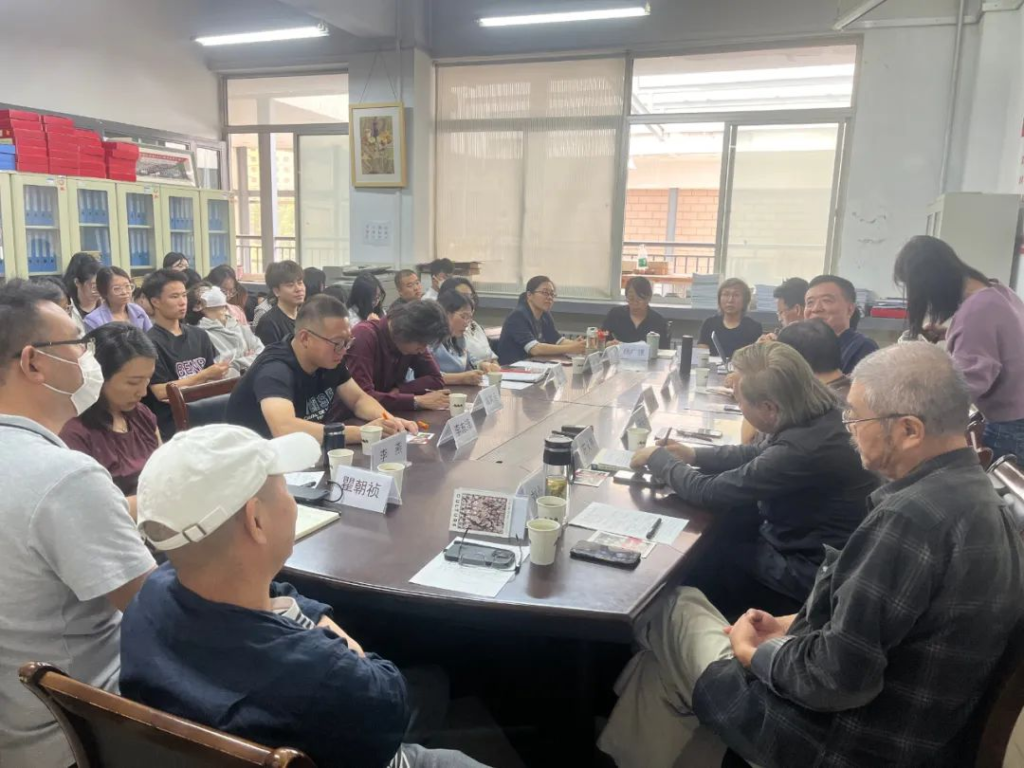
Professor Wang Jianjiang believes that from the book Post-Colored Pottery, it can be seen that the theory of Bie-modernism continues to influence and play a role in the practice of Post-Colored Pottery. It can be said that the art of Post-Colored Pottery gradually intersects and integrates with other modernism from concept to practice. Under the influence of Bie-modernism theory and its propositions, post-painted pottery practice has clarified ideas in terms of differential thinking, expansion of artistic boundaries, active creation of authentic and Chinese contemporary art, and identification of contemporary Chinese social and aesthetic forms. Post-painted pottery has produced comparisons, judgments and attitudes about the reference, imitation, appropriation, transplantation, hybridization, integration and mutual penetration of Chinese and Western cultures from ancient to modern times. Bie-modernism theory provides guidance and reference for the creation of post-painted pottery. Post-painted pottery is also testing the applicability and expandable and applicable space of different modern theories in the continuous artistic practice.